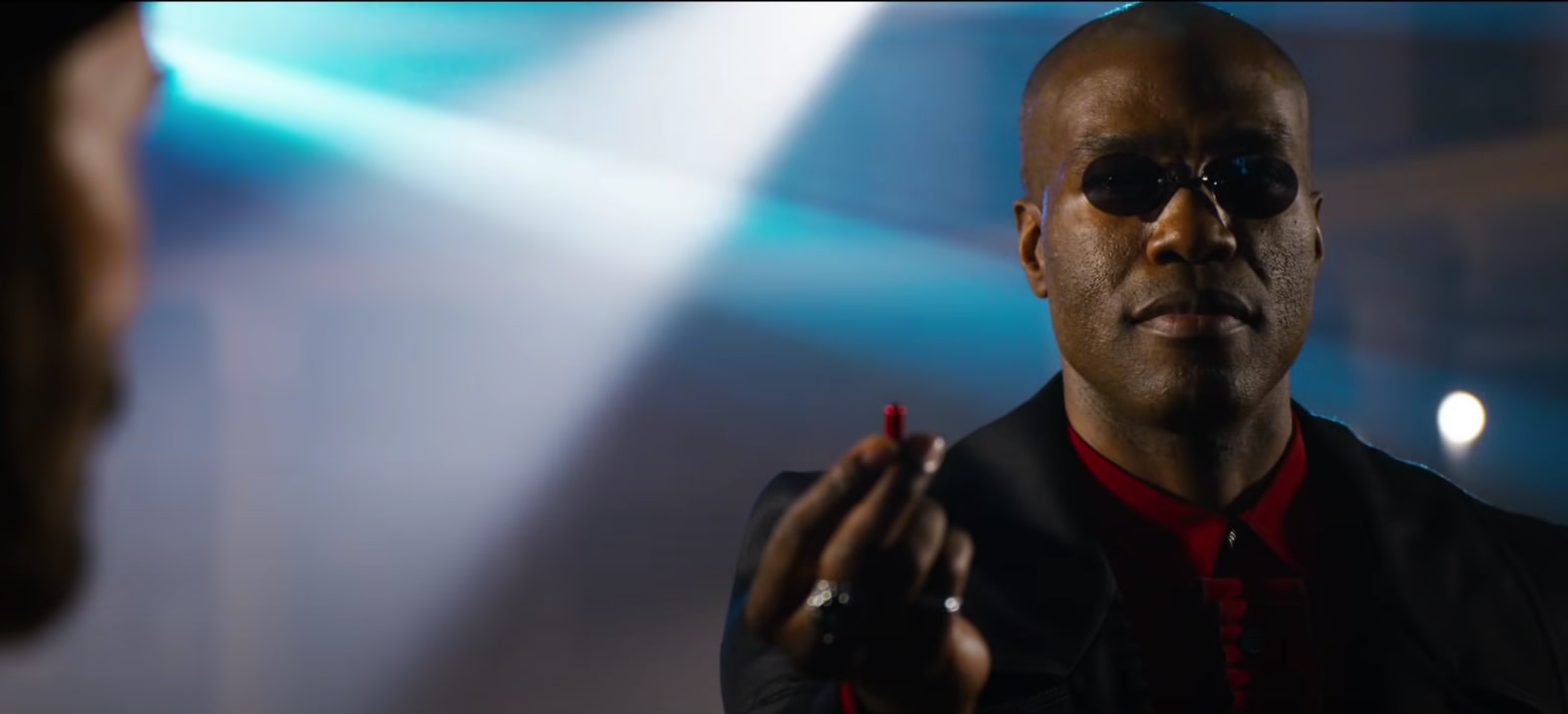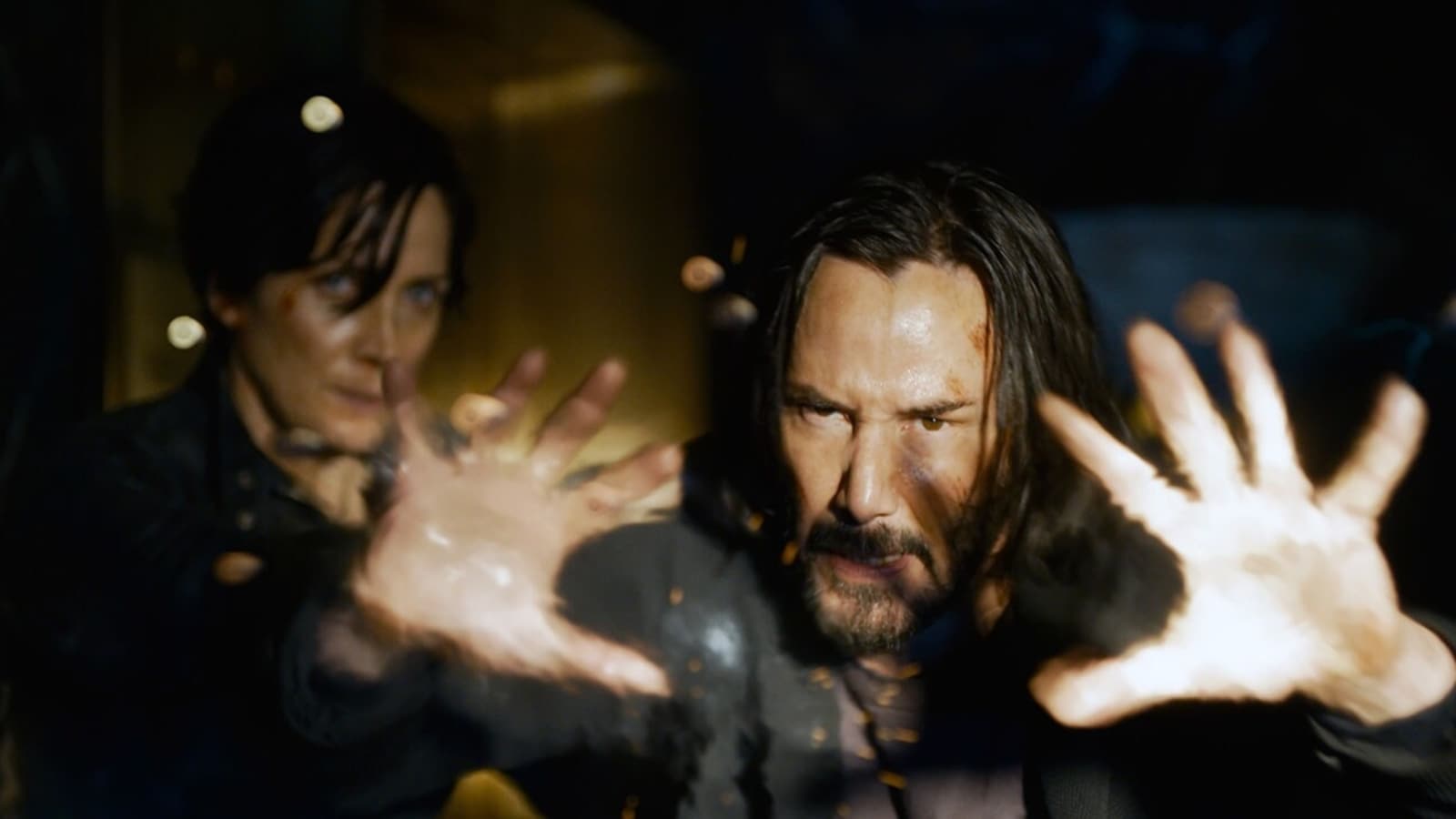The Matrix Resurrections movie review: Keanu Reeves’ film is a glitch in Matrix’s legacy, despite intriguing ideas
The Matrix trilogy was always centered on love.
Despite his humanity-saving, peace-ushering responsibilities as The One, for Neo it was always about Trinity. Her love for him brought him back from the brink of death at the end of The Matrix (1999). Hers is the life he chose over saving the human race in the final scene of Reloaded (2003). She’s the one who gave her life to help him fulfil his destiny and end the war in Revolutions (2003). It’s a kind, reassuring idea. That, even within its endlessly dissected spectacle and spirituality, heady philosophy and grand, good vs evil, man vs machine stakes, The Matrix movies are, in their essence, all about love.
The Matrix Resurrections, the fourth part in what was thought to be a trilogy, doubles down on this love story, once again attempting to subvert and have us question what we know about The One and his journey. It’s no longer about him, it’s about them.
The goosebump-inducing familiar score and the now-iconic streams of green code trickling down the screen in the opening credits, throw us back into the Matrix, where we meet an older, shakier, more uncertain Thomas Anderson (the inimitable Keanu Reeves reprising the role after 18 years). Once again, Thomas goes about his repetitive, empty life, knowing that deep down, something isn’t right about this world he inhabits.
Watch The Matrix Resurrections trailer:
But unlike the Thomas Anderson we were introduced to 22 years ago in The Matrix, this Thomas isn’t a hacker. He’s a world-famous game designer responsible for creating the beloved Matrix trilogy (here a series of games, not movies). Neo lives (no surprises there) and his mind is once again being held captive by the machines. But to keep him popping blue pills and convinced that this fake reality is real, this version of the Matrix doesn’t deny his past, it embraces it. He’s made to believe that all his memories of being The One and Morpheus and Trinity, The Oracle, The Architect, the battle of Zion and Agent Smith, all happened in his imagination. Memories that are nothing but the stories of a celebrated series of games he created and that his fractured, delusional mind has come to believe are real. Also in Thomas Anderson’s new virtual prison is soccer mom Trinity (Carrie-Ann Moss), who calls herself Tiffany. She’s drawn to Thoman for reasons unknown, and like him, she also feels like she’s living her life which isn’t her own.
This insanely meta first leg of director Lana Wachowski’s film (one-half of the Wachowski siblings responsible for the iconic first three movies)–what I’m calling the MetaTrix–is easily the most intriguing and promising. Young fans come up to Thomas in public places to tell him how The Matrix series changed their lives. His creepy business partner Smith (Mindhunter’s Jonathan Groff) tells him “Warner Brothers have threatened to make a sequel to the trilogy”. What follows is boardrooms full of people and marketing nerds (including a charming cameo from our very own Purab Kohli) discussing the appeal of the Matrix series and what direction to take this new sequel in. “The Matrix is mind porn” someone says. Another insists it’s about politics and religion. “This can’t be just another reboot”, while someone else adds “all you need is loud action and more bullet time…something to keep the kids entertained”.
Like this, among Resurrections triumphs are the ideas it explores. Not only does it consistently poke fun at the nature of sequels and reboots themselves, it’s also not just a continuation to the Matrix trilogy, it’s about the trilogy. An ode to the Matrix movies themselves.

And once again, Neo needs to be extracted from his simulated captivity and have his mind freed. Tasked with this free-the-mind heist is Bugs (an earnest Jessica Henwick). Bugs and her crew have been searching for Neo for years. Helping him get him out is also a mysterious new Morpheus (a brilliantly cast Yahya Abdul-Mateen II). As they go about attempting to extract him, we are reintroduced to a changed world. Writers Lana Wachowski, David Mitchell and Aleksandar Hemon offer promising ideas on how they expand this world and the evolving equation between man and machine after the events of Revolutions.
And yet, while I’m still processing much of Resurrections (it certainly and urgently requires a second viewing) and what it really adds to the Matrix legacy, what I can’t shake off is what is lost. Aside from the wider plot and familiar faces, it seems to strip away all the specificity that makes these movies the most defining and rightfully celebrated sci-fi movies ever made (I remain a staunch defender of all three). Movies known for intoxicating storytelling that made the originals far greater than the sum of their electrifying parts. The distinct visual style, exhilarating action, philosophical rabbit holes, cyberpunk meets goth aesthetic and thoughtful editing. Even the sound design demanded you feel every punch, kick and backflip. Everything in those films lived in service of and contributed to one of the most distinctive cinematic blockbuster experiences seen on screen.
There’s little of that in Resurrections. The frequently choppy and disorienting editing and action scenes are serviceable at best. Grand showdowns, like one where Neo and Smith face-off, barely have the same weight and thrills as the sequences from 20 years ago (it’s almost an achievement to somehow backtrack on fight sequences after two decades). There’s not a single memorable action set-piece on offer here that stays with you. In short, there’s a lot more colour, a lot more gunfire, and a lot more genericness to it all.
I’m sure I’ll eventually be told by some write-up or troll that this was somehow all intentional, and I’ve entirely missed the plot or the big Matrix-y metaphor staring me in the face. Something about how that’s exactly how it wants me to react, and it’s actually so meta that it’s referencing its own shortcomings…or something. I’ll leave that for more evolved minds to comprehend.
Resurrections also loses potency by shifting its focus from Neo to the Neo-Trinity love story, without offering much in return. A big part of what made these movies so compelling is Neo and his internal journey of seeing a man struggling with the burden of a responsibility he doesn’t understand gradually come into his own and learning to believe. And he’s never been less interesting than in Resurrections. Aside from the early MetaTrix portions where we yearn to see him freed, we care about him here only because of what came before, not because of anything that unfolds here.
Also read: 83 movie review: Ranveer Singh and his Devils take you time-travelling in this excellent, emotional film
Similarly, the new characters just aren’t as enticing as those that came before. Other than Jessica Henwick’s Bugs and Yayha’s scene-stealing Morpheus, the other characters have little to offer. Priyanka Chopra as Sati and the remainder of Bugs’ crew have little to do. But above all, as the original films showed us, even the smartest, most sophisticated action movies are only as good as their villains and here neither Jonathan Groff the new Smith or Neil Patrick Harris as The Analyst come remotely close to the piercing presence of Hugo Weaving or the calculating cold of Helmut Bakaitis’ The Architect.
In the end Resurrections works better as a meta exploration of the impact of The Matrix movies than a satisfying, and more importantly, necessary, follow-up. One that’s so busy winking at us, that it risks giving us a headache. At its very best it feels like Deja Vu–a glitch in the legacy of the Matrix.
The Matrix Resurrections
Director: Lana Wachowski
Cast: Keanu Reeves, Carrie Anne Moss, Neil Patrick Harris, Priyanka Chopra, Yahya Abdul-Mateen II and others
For all the latest entertainment News Click Here

